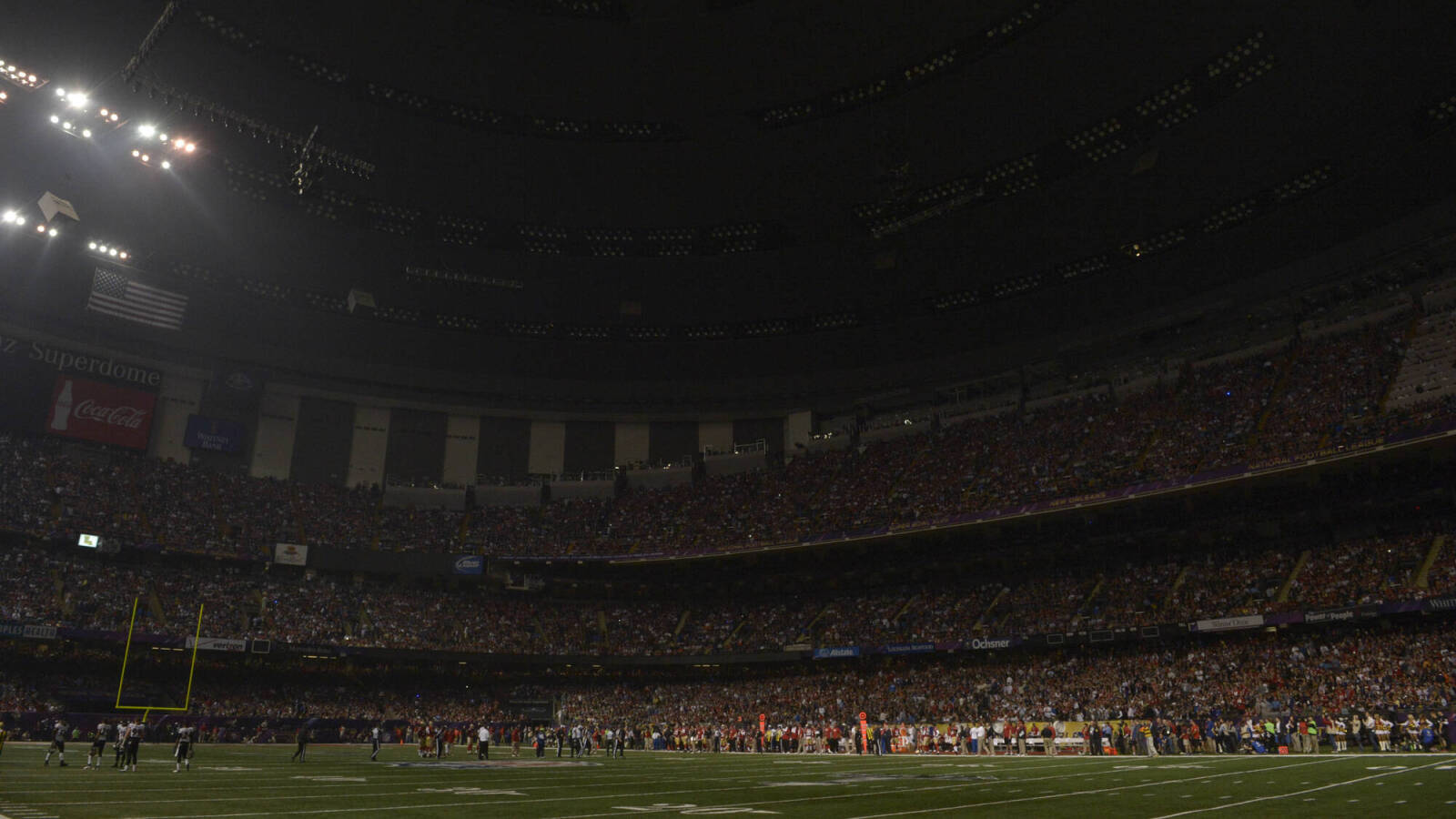Former New York Jets quarterback Boomer Esiason feared the worst amid the famous blackout during the Super Bowl XLVII matchup between the Baltimore Ravens and San Francisco 49ers.
“Two things probably stand out,” legendary play-by-play broadcaster Kevin Harlan recalled while speaking with Michael Grant of Awful Announcing. “No. 1, just the stunning nature of it. ‘What happened?’ It was so sudden and all of our electronics went out, headsets, all the different things we use in that network broadcast booth went dead. Then, the second thing is the look on (color commentator) Boomer Esiason’s face when it happened. He lost a lot of close friends in the 9/11 attack, and was still apprehensive, hesitant.”
Super Bowl XLVII occurred at what used to be known as the Mercedes-Benz Superdome in New Orleans on Feb. 3, 2013, less than 12 full years after the terrorist attacks of September 11, 2001.
Harlan and Esiason worked the game’s radio broadcast that evening for Dial Global, which has since merged with Westwood One.
Esiason’s worries were unfounded. As Jason Hanna noted for CNN in 2013, “a newly installed electrical relay device meant to protect Superdome equipment” caused the blackout that suspended play in Super Bowl XLVII for roughly 34 minutes.
Harlan and Esiason used phone lines connected to the radio studios in New York to relay what had happened to listeners. According to Grant, the radio broadcast went out for 26 seconds during the blackout until commercials ran, likely to the delight of advertisers.
“You don’t have time to think about what you’re feeling,” Harlan added during his conversation with Grant. “You put your professional hat on. It’s interesting. Your focus almost sharpens more in that situation just because everything is heightened: noises, what your eyes are telling you. In a football game, you’re expecting handoffs. You’re expecting catches and tackles. But in this, you’re literally going from second to second with what you’re seeing. And now, the task of describing is foremost in your mind.”


